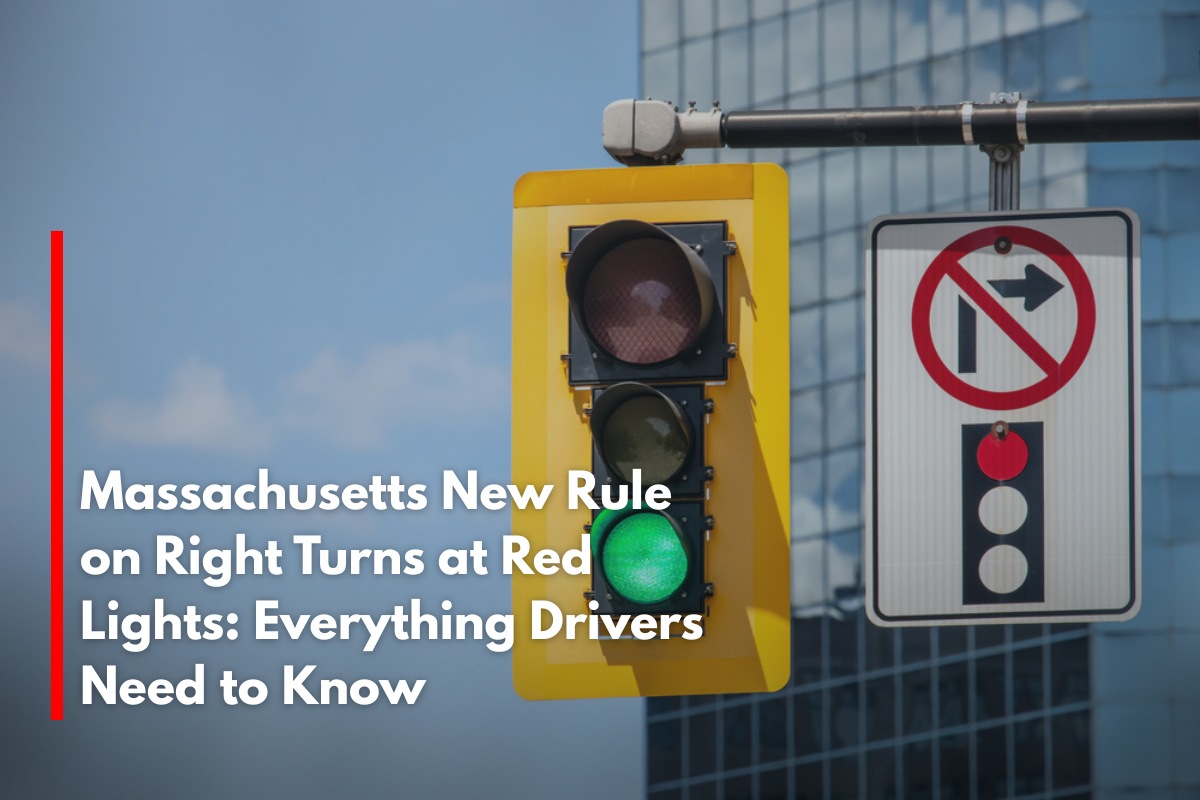Massachusetts historically had stringent restrictions regarding right turns on red lights, making it one of the few states where this maneuver was limited compared to the rest of the country. However, as of 2025, Massachusetts has updated its rules around right turns on red to align more closely with national standards while maintaining important safety measures.
What the New Rule Entails
The new Massachusetts law permits drivers to make a right turn on a red traffic signal at most intersections, provided they come to a complete stop and yield the right-of-way to pedestrians and other vehicles lawfully proceeding through the intersection. This change ends the near-complete ban on right-on-red turns that had been enforced in much of the state.
The law also continues to allow a left turn on red when turning from a one-way street onto another one-way street, a maneuver that was previously permitted but often misunderstood.
Important Yielding and Safety Requirements
Under the updated rule, before making a right turn on red, drivers must:
Come to a full stop behind the crosswalk or stop line.
Yield to pedestrians crossing the street.
Yield to all other vehicles that have the right-of-way, including bicycles.
Ensure that the turn can be made safely without interfering with traffic flow.
Failure to yield the right-of-way can result in traffic citations and fines.
Exceptions and Prohibitions
Despite the general allowance for right turns on red, Massachusetts maintains restrictions in certain areas:
Any intersection with a posted “No Turn on Red” sign prohibits the maneuver.
Locations with high pedestrian traffic, complex traffic patterns, or safety concerns may still restrict right turns on red to prevent accidents.
Certain municipal or city-specific ordinances could further regulate or restrict right on red in particular neighborhoods.
Impact of the Rule Change on Traffic and Safety
The updated rule is intended to:
Improve traffic flow and reduce congestion at busy intersections.
Align with federal regulations promoting energy efficiency by reducing idling time.
Maintain high safety standards by enforcing yielding requirements.
Studies from other states show that allowing right turns on red generally helps reduce waiting times at lights with minimal impact on pedestrian safety when proper precautions are followed.
What Drivers Should Do
Motorists in Massachusetts should:
Familiarize themselves with intersections displaying “No Turn on Red” signs.
Always come to a complete stop before turning on red.
Watch for pedestrians, cyclists, and oncoming traffic carefully.
Understand that improper turns on red can lead to fines and increase accident risk.
Key Takeaways for Massachusetts Drivers in 2025
Right turns on red are now allowed statewide where not specifically prohibited.
Drivers must stop fully and yield to pedestrians and other traffic before turning.
Signs will indicate intersections where right-on-red remains illegal.
The change aims to balance traffic efficiency with safety.
Awareness and adherence to the new rules will help keep roads safe and traffic moving.
Massachusetts’ new rule on right turns at red lights modernizes an outdated restriction while prioritizing pedestrian and road safety. Drivers should stay informed, watch for signage, and proceed cautiously to enjoy smoother commutes in 2025.
Sources
(https://malegislature.gov/Laws/GeneralLaws/PartI/TitleXIV/Chapter89/Section8)
(https://en.wikipedia.org/wiki/Turn_on_red)
(https://www.mass.gov/info-details/mass-general-laws-c90-ss-14)
(https://trackbill.com/bill/massachusetts-senate-docket-1727-an-act-relative-to-turning-on-red-signals/2612754/)
(https://www.pinterest.com/pin/massachusetts-traffic-rule-2025-update-understanding-the-right-turn-on-red-rule-newsbreak-in-2025–425308758579445780/)











